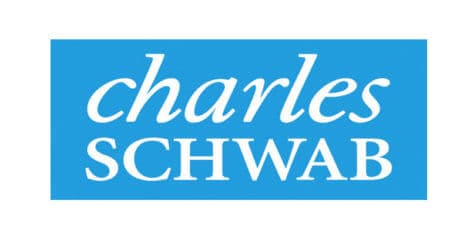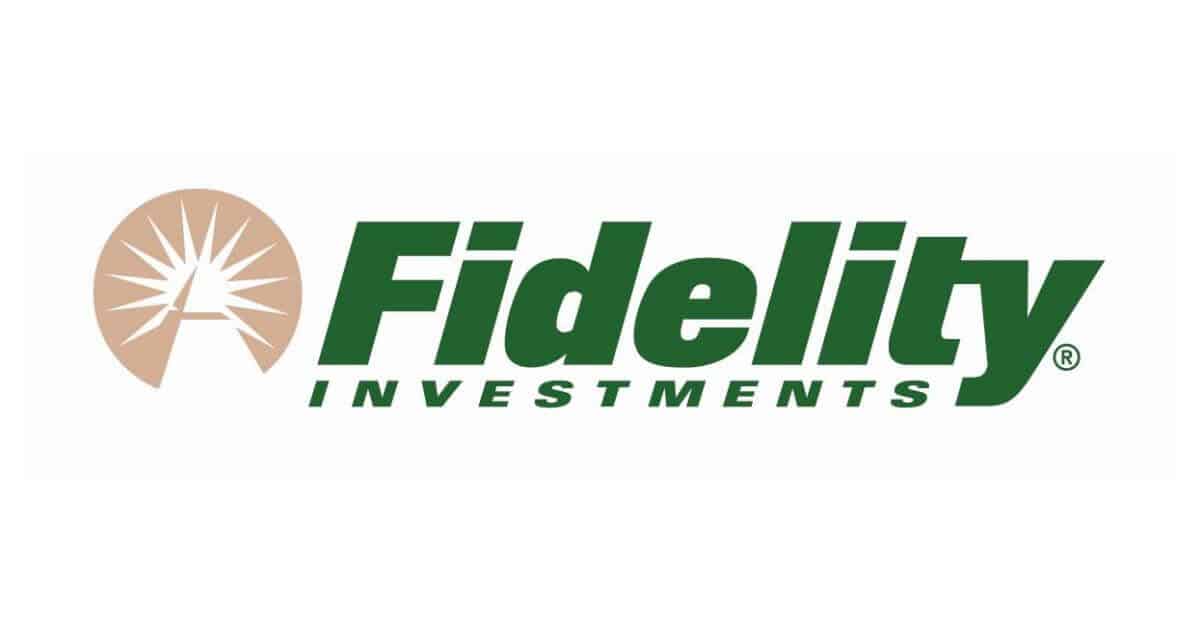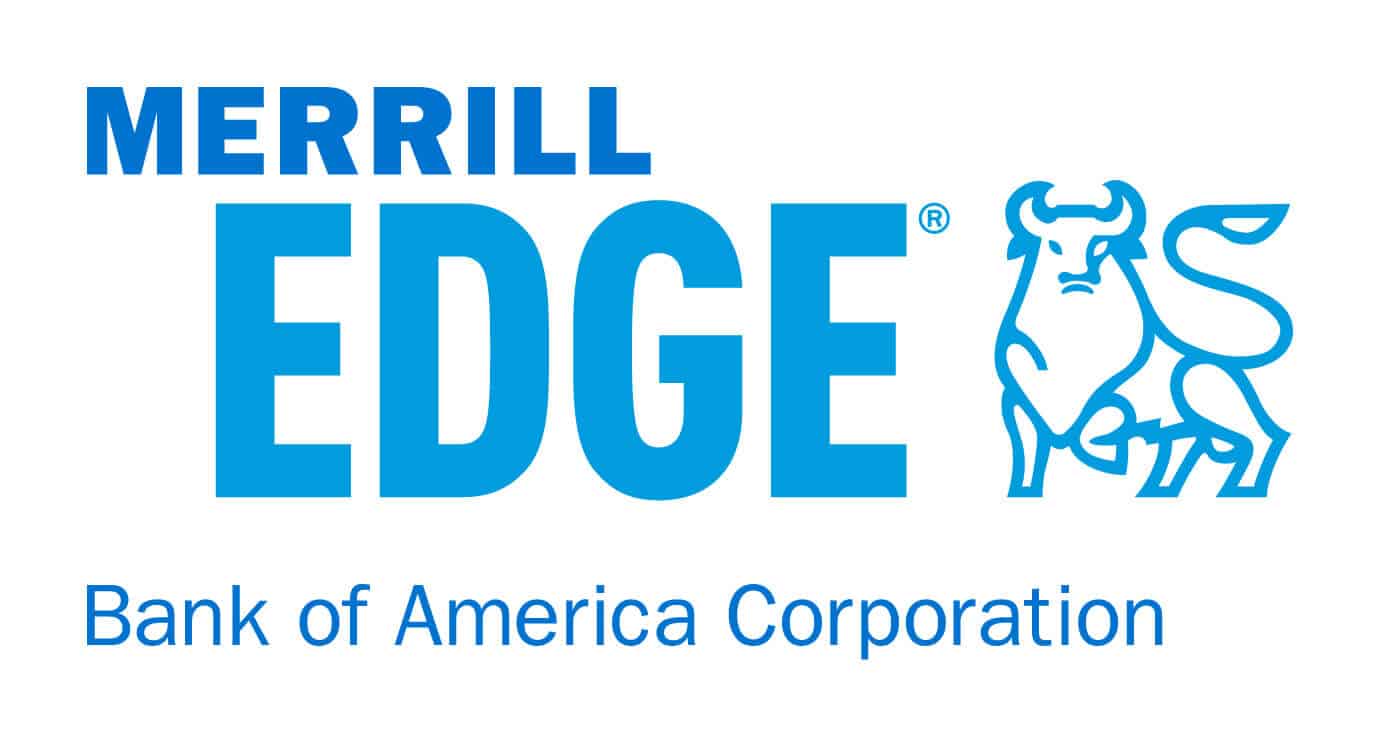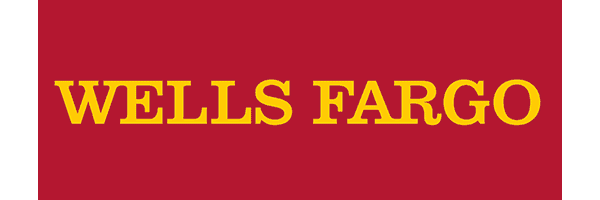The Best 401k Plans
One of the keys to successful retirement savings is to start planning for your golden years as soon as possible. The earlier you start the more you can benefit from the tax advantages of a 401k plan – an employee-sponsored retirement savings account. Many individuals make the mistake of not only leaving investing for retirement too late but also not taking advantage of the many tax incentives that a retirement plan can provide. If your colleague in the next cubicle told you that you could get your employer to give you an extra 3-5% of your income for free every month, would you say no to it?
Surprisingly, many workers are unaware of how they can grow their retirement savings through tax benefits and employee contribution matching funds, or voluntarily choose to pass on the opportunity. This guide to saving for retirement with a 401k plan will show you how to get the most from your 401k. We compare the different plans and options, assess the pros and cons, review the most popular 401k plan providers, and provide tips on how to maximize your 401k.
-
-
1. Vanguard Group
Our Rating
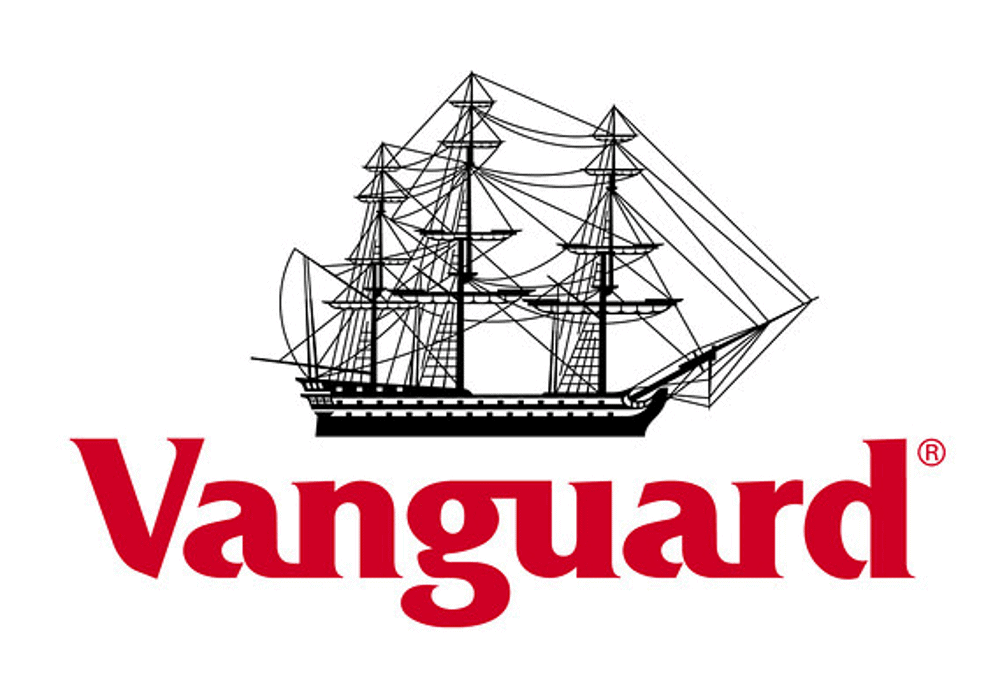
- Open an account Free of charge
- Hardship withdrawals allowed
- Get a free portfolio management
- Make your retirement plans in an easy and straightforward process

What are the Tax Advantages of 401(k)s
Jean makes $50,000 a a year. She decides to invest $5,000 in her 401(k) account this year. Because this investment is pre-tax, Jean is only taxed on $45,000. At a 25 percent tax rate, Jean would defer $1,250 in taxes. Jean will benefit from tax-deferred growth as she will not be taxed on this money until she withdraws it in retirement. Most retirement plans allow withdraws at the age of 59 1/2. If Jean is in a lower tax rate in retirement, she will ultimately pay lower taxes on these earnings.
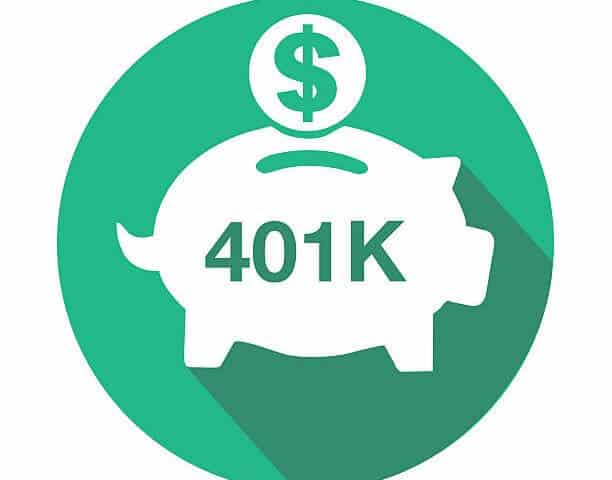
Early retirement planners also have more time to benefit from the power of compound interest. Jean continues to contribute $5,000 a year to her 401k account, and to this number her employer adds 100 percent matching funds for an annual savings of $10,000. Considering that the stock market delivers on average an annual return between 8-12 percent, we can conservatively say that she will earn a 10% annual return. After 30 years, on total contributions of $300,000 she would have $1.6 million in her retirement account.
But unfortunately, Jean is a procrastinator and starts saving for retirement at 45 years of age. She invests $20,000 ($10,000 + $10,000 employer match) each year until age 60. She still makes total contributions of $300,000 but with half the time to benefit from the effects of compound interest, her retirement savings at age 60 are significantly less, $635,450. For a retirement saver, the higher return on income from investing early is too good to let the opportunity pass by.
Your money can easily multiply over a long period of time when the interest and earnings generated from the account are reinvested year after year and compound interest is working for you.
Keep in mind that while 401ks are not the only option for retirement plans available in the US, they usually offer the best incentives and tax advantages. Understanding the many different types of 401Ks and their specific benefits will help you maximize your retirement savings. Here are the most common types of 401Ks available in the market in 2020:
What are the different Types of 401(K)s?
Traditional 401kSafe Harbor 401kSIMPLE 401kROTH 401kSolo 401kTraditional 401ks allow eligible individuals to defer taxes on contributions and earnings in a 401k plan until they withdrawal the funds during retirement. One of the major differentiators between an IRA and a 401K is that employers can contribute to these retirement accounts, matching the contributions of their employees by a percentage, which varies by employer.
Keep in mind that any contribution made by the employer can be subject to a vesting process or schedule. This means the employee will only receive the contribution in full after working for a set period of time. While this is not the rule for all plans, it is pretty common to see employers utilizing this feature in order to retain their personnel.
Traditional 401Ks do not have a restriction in terms of the number of employees, making it a suitable tax-advantaged retirement plan for employers of all sizes, as well as business owners who are self-employed.
One of the major benefits of a traditional 401k is that it can be combined with other retirement plans such as an IRA. Like most retirement plans with a tax incentive, there is a contribution limit per year. For a traditional 401k, employees cannot contribute more than $19,000, but this only takes into consideration deferred payments made by the employee and not the employer matching contribution. The overall limit including both employee and employer contributions is $56,000, which leaves space for employers to contribute up to $37,000 per year.
Pros
- Tax advantages
- Higher contribution limit than an IRA
- Employer matching contribution (Who wouldn’t take free money from their employer?)
- Federal/legal protection by the Employee Retirement Income Security Act – ERISA
Cons
- Forced withdrawals after you reach the age of 70 1/2
- Contributions cannot be made after the age of 70 1/2
- The money will be taxed after withdrawal at the current tax bracket
- Certain employers will have their own limitations in terms of how much you can contribute
One of the major pain points that any employer has to deal with when offering a 401K is the non-discriminatory tests that they have to comply with every year. These tests measure and compare how highly compensated employees and other contributors utilize and take advantage of the company’s 401K. The findings in these tests can result in expensive corrective measures, refunding of contributions and a ton of administrative bureaucracy that spooks the compliance department at any company.
The Safe Harbor 401K was created as an alternative that is exempt from these discriminatory tests, creating a neutral ground that protects employees and frees employers from administering the tests and their procedures. One of the key criteria for a plan to be Safe Harbor is that matching contributions be vested immediately. This means that employees gain immediate access to the funds and they will not be withheld. This provides peace of mind for any employee as their retirement matching plan will not be subject to conditions such as working for an X period of time or meeting certain performance criteria.
Here are some basic examples of contribution formulas:
- Basic matching: The company matches 100% all employee contributions up to X%, plus an extra 50% match for contributions after the initial X percentage.
- Enhanced Matching: The company matches 100% for all employee contributions up to X% of their compensation (not exceeding 6% of compensation).
- Non-elective contribution: This unique model only available for Safe Harbor plans consists of contributions made by the employer whether or not the employee contributes. In this case, the company will contribute a flat% of the employee’s compensation to a 401k plan.
Just like Traditional 401Ks, Safe Harbor plans can be combined with other retirements plans like IRAs. The max limit for employee and employer contributions is $19,000 and $37,000, respectively.
Pros
- Nonelective contribution
- Employers are required to make a minimum contribution of 3% to all employees or provide a 100% match up to 4% of employee contributions
- Ensures 401k plan compensates lower compensated employees, and does not favor highly compensated employees
- High contribution limit
Cons
- Could increase employer’s payroll expenses
SIMPLE 401ks are a combination of a Traditional 401k and Traditional IRA. Like Safe Harbor accounts, SIMPLE 401ks do not have to meet the nondiscriminatory and top-heavy testing required by IRS compliance. Therefore, all contributions are fully and immediately vested. This allows individuals to gain access to contributions made by the employer as long as they meet the requirements while not being subjected to timing or performance conditions.
Unlike IRAs, a key characteristic of 401k plans is that loans can be taken out, using the 401k as collateral for the loan. It is important to mention that for this type of loan the individual would be borrowing from their own money, and payments and interests will be paid to their own account. In the case an individual fails to repay the loan, it will be considered as a withdrawal, meaning that the individual would have to pay the taxes and any penalty due. The same max contributions as a Traditional 401k apply.
Pros
- No heavy testing for discrimination
- Cheap plan option for small employers with less than 100 employees
- Same tax incentives as a regular 401k
- Loans using the account as collateral
Cons
- Lower contribution than traditional plans; individuals can only contribute a max of $13,000 a year ($6,000 less than in a traditional 401K).
- Only available for small companies with no more than 100 employees.
- While a fully vested account is an option for employees, it represents a problem for most employers as they lose the leverage that is usually used to mitigate employee turnover.
Roth 401ks allow individuals to access the same tax incentives as Roth individual retirement accounts (IRAs), effectively combining the best of both vehicles. The major difference for this type of account is its tax model. While in regular 401ks, taxes are paid in full once the money is withdrawn from the account, ROTH accounts invest after-tax money. Under a Roth 401k, $1 withdrawn is $1 in the pocket as its taxes have already been paid.
ROTH investment vehicles provide the best tax incentives if you expect to be under a higher tax bracket in the future. Otherwise, if you are planning on lowering your tax bracket, then you might want to consider a Traditional 401k as the tax paid in the future will be lower than that paid upfront.
Another important characteristic of this type of plan is that withdraws are not as flexible as those for ROTH IRAs, on which individuals can take out their contributions (not their earnings) whenever they want. The ROTH 401k has a five-year rule for distributions to be considered as qualified and taken tax-free. The max limit for employee and employer contributions is $19,000 and $37,000, respectively.
Pros
- Taxes payable now, like a Roth IRA
- Higher contribution limit than a Roth IRA
- Low effort investing
- Easy to transfer your Roth 410k to a Roth IRA when you leave your job (and avoid RMDs)
Cons
- Fewer investment choices than IRAs
- Even though a Roth 401(k) is funded with post-tax income like a Roth IRA, it is still tied to the withdrawal rules of a regular 401(k).
The Solo 401K was specially designed for the self-employed and entrepreneurs, allowing self-employed individuals the same type of tax incentives and perks as any other employee. While the plan is structured like a 401K, individuals play the role of both employees and employers against the IRS.
For instance, the contribution limit for a Solo 401K is $19,000, which is exactly the same as a Traditional plan. But since you also can act as your own employer, you would be entitled to contribute up to 25% of your compensation, for a total combined contribution of up to $56,000, which is the standard limit between both employee and employer for traditional 401Ks.
One of the best benefits from this type of plan is that the IRS allows covering your spouse under this plan. This effectively doubles the amount you can contribute as a family, an extra $19,000 and a max contribution of up to $56,000.
Pros
- Spouse coverage
- Higher family contribution
- You can choose to open your Solo 401K as a Traditional or a Roth plan.
Cons
- No unique drawdown on this type of plan
- Same cons as both Traditional and Roth models
Best 401k Providers
Employers typically give you the option of choosing a 401k provider among an approved list of providers. A business looking for a retirement plan for their employees or a self-employed individual will be free to choose among all providers.
When choosing a provider, avoid being misled by short-term performance. Our choice of providers have been helping individuals planning for retirement grow their assets for a long time. Before selecting a 401K provider, remember your goal is long-term gains and not immediate profit. We recommend leaning towards any firm that has survived at least one market crash as in 1987 and 2008. These firms have proven to have the survival skills necessary to overcome market meltdowns and keep their customers afloat. Retirement planning is one of those moments in life where you simply need to hire experience.
Following are the overall best providers available in 2020:
1. Vanguard Group
The Vanguard Group is a multinational financial services company with over $5.3 trillion in assets under management (AUM). The fund giant is the largest provider of mutual funds in the world and the second ETF provider, only behind BlackRock’s iShares. This stalwart of the mutual fund industry has earned a reputation for solid fund performance (93 percent of no-load mutual funds outperformed peer-group averages over 10 years) and low fees (84 percent less than the industry average).
The size of its funds also demonstrates consistent performance. Twelve of the top 20 mutual funds and ETFs by AUM are Vanguard funds. Retirement accounts can choose from a wide universe of active and passive funds, and ETFs. Vanguard invented the passive index fund (a fund that tracks an index such as the S&P 500) – a main component of many 401k plans today.
About one-third of Vanguard funds are actively managed. Through the Vanguard Brokerage Option, 401k plans can gain access to over 3,000 mutual funds and 1,800 ETFs (Vanguard and third party). For do-it-yourself (DIY) self-directed investors, SIPP (Self-Invested Personal Pension) plans allow you to select your own target funds. Vanguard charges a $20–25 annual fee for each Vanguard fund in a retirement account with a balance of less than $10,000. Very low expense ratios are offered on target funds and Admiral shares.
Notes: If you want “experience” to be your guide on your retirement investment journey, the Vanguard Group is the go-to option from this list. The requirements are high but the service and performance offered by this reputable provider are difficult to match. Not many companies can say they manage 170 mutual funds and 80 ETFs.
Our Rating

- Low $1,000–$3,000 initial investment
- Low-cost fund leader, no fees
- Large selection of mutual funds, target funds and ETFs
- Loans available against 401k account
- Unlimited access to live human financial advisors
- Tailored more towards buy-and-hold investors than DIY investors (stocks, bonds, and options can be traded through a Vanguard Brokerage account)
- Self-directed SIPP option limited to 75 Vangaurd target funds
- You could be charged transaction fees on select funds
2. Charles Schwab
Charles Schwab ($3.25 trillion AUM) is widely credited with pioneering the low-cost online brokerage revolution. True to its calling, Schwab charges no account, maintenance or online trading fees on thousands of Schwab Mutual Fund OneSource mutual funds, ETFs, or stocks. You may also invest in the lowest cost target date funds and target index funds. But far from the no frills brokerage experience, this well-rounded brokerage house offers access to every asset publicly traded on global exchanges, allowing ample opportunity to design your retirement portfolio based on your risk profile and tolerance. The self-directed option, the Schwab Personal Choice Retirement Account, provides access to a full-fledged brokerage experience (although your employer may restrict access to some securities) – fixed income (bonds, treasuries, CDs, etc.), stocks, and options, as well as mutual funds and ETFs.
While many retirement savers start with a robo-advisor, Schwab Intelligent Portfolios® has a $5,000 minimum, $25,000 with a personal advisor. As your retirement portfolio grows in value, you may opt for one of Schwab’s managed accounts (Minimum $25,000–$250,000). The online investor can always access automated phone and broker-assisted trades for a fee.
Individuals who are self-employed and small business owners will benefit from a large choice of retirement accounts and services tailor-made to provide overall better service for smaller plans (SEP-IRA, SIMPLE IRA, Individual 401(k), Personal Defined Benefit Plan, Business 401(k), Company Retirement Account). Other retirement accounts include IRA (Traditional, Roth, Rollover, Inherited), and the Schwab Personal Choice Retirement Account®.
Our Rating
- No minimum balance
- No direct fees on mutual funds, ETFs and stocks; lowest cost target funds
- 24/7 access to investment advisors (for a fee)
- Wide choice of small business and individual retirement accounts
- All inclusive investment services, including self-directed and managed account options
- High minimum balance for Schwab Intelligent Portfolios robo-advisor
- High commission of $49.95 on non, no-fee mutual funds
- Automated portfolios may have too high of a cash allocation (up to 30%) earning zero interest.
3. Fidelity
Fidelity ($2.5 trillion AUM) vies with Vanguard for the top 401k provider spot. Over 22,000 companies trust their defined-contribution and defined-benefit plans to Fidelity. Since the platform is oriented towards new investors and especially those looking to delegate the investment management to someone else, the firm’s hybrid proprietary model combines both algorithms and financial advisors to restructure and rebalance portfolios when needed. 401k plans can choose from mutual funds, ETFs, target date funds, stocks, and bonds.
Many investors take their first steps towards retirement savings with the Fidelity Go® robo-advisor. With no fees, commissions or account balance limits, on a $10,000 balance you will be charged $3.50 a month based on a 0.35 percent advisory fee. Investors who want more guidance can step up to Fidelity® Personalized Planning & Advice. This hybrid robo-advisor also provides financial coaching for a 0.50 percent advisory fee.
For traditional face-to-face advice on retirement, tax strategy and legacy planning, Fidelity®Wealth Services charges an annual advisory fee of 0.50% – 1.50% on a $250,000 minimum balance. Fidelity has added financial planning and education to its managed account service Portfolio Advisory Service at Work to meet the demand from plan participants who seek the security of professionally managed accounts over self-directed investing. Rollover IRA, Roth IRA, Traditional IRA, Inherited IRA, Roth IRA for Kids, SEP IRA, SIMPLE IRA, Self-employed 401k, Investment-Only Retirement
Our Rating
- No minimum deposit, commissions or account service fees
- Zero expense ratio index funds
- Managed accounts tailored to 401ks
- Self-directed trading options
- Financial advisors available with most accounts
- $32.95 broker-assisted trading fe
- High minimum balance of $25,000 nd 0.50% advisory fee for hybrid robo-advisor
- No loans against some 401K accounts (Solo)
4. Merrill Edge
Merrill Edge ($1.4 trillion AUM) is the online brokerage unit of Merrill Lynch. The acquisition by Bank of America in 2009 added banking services to this solid option for a full-service 401K. The company has targeted a similar market to Charles Schwab, focusing on small companies and retail individuals looking to start their own retirement plan. Plan participants also have access to banking, lending, and wealth management services via Bank of America.
As a standalone firm, Merrill delivers a cost-efficient service designed to provide a broad range of investment options and personalized service to each individual. 401(k) plans have access to a defined universe of funds, whereas the plans for self-employed (SEP) and SIMPLE IRAs (less than 100 employees) provide access to the full range of investments.
Merrill offers access to the major financial markets and all investment vehicles publicly traded on major exchanges. On a Small Business/Individual 401(k), the employee is charged 0.52 percent annually plus a $3 monthly administration fee. SEP and SIMPLE IRA plans charge no fees for online trading of stocks, ETFS, CDs and treasuries. Traditional, Roth, Small Business 401(k), Individual 401(k), SEP IRA, SIMPLE IRA
Our Rating
- No account minimum or trading fees on stocks or ETFs
- Seamless integration with Bank of America
- Full access to brokerage services through self-directed investing options
- Loans available against 401k account
- High 401k account fees: $100 setup fee, $20–$25 monthly account fee, $3 monthly record keeping fee, 0.52 percent annual asset-based fee
- $19.95 fee on non, no fee mutual funds
- $20,000 account minimum for direct investor advisor guidance
5. Wells Fargo
One of the biggest competitors for Merrill is Wells Fargo ($1.6 trillion AUM). Both plan providers offer 401k and full banking services. Wells Fargo provides a complete combo of services, including regular 401K administration, trading services, investment advice, banking services, and wealth management, enabling retirement savers to place their financial life under the same umbrella.
401(k) investment options are more limited than with some competitors. Employees can choose from a selection of no fee mutual funds, or pay a $35 fee on other funds. No fee is charged for stock and ETF trading. Or let the Intuitive Investor robo-advisor invest and automatically rebalance your portfolio for you for a 0.50% fee.
Wells Fargo Advisors is an option if you want a live financial advisor to provide guidance and help you set up and manage retirement, investing, estate planning and trust accounts. The program is centered around an enhanced brokerage account, from which you can access all types of securities (including mutual funds, ETFs, stocks, annuities, fixed income, futures, options). Keep in mind this service has a $100,000 account minimum and $100 annual household fee, and may offer the beginning retirement saver more and enhanced services they do not initially need.
Our Rating
- Integrated banking and investing services, and complimentary payroll management for small companies as part of their 401K management business
- No trading fees for stocks or ETFs
- Large branch network
- Loans available against 401k account
- Wells Fargo fees could surpass their competitors when tallying administration, annual and custodian fees, and a $30 annual household fee.
- High fees for non, no fee funds
- High account minimum of $10,000 on robo-advisor
Tips to max your 401k
Most individuals preparing a retirement plan go straightaway to their retirement provider’s online calculator to sum their contributions and the effects of compound interest until retirement. In many cases, the result is disappointing as it does not meet their expectations.
While it is important to forecast and have a clear view of the possible outcomes of a 401k based on your current contributions, investors should be aware that there are many other factors that will influence their returns both positively and negatively.
Here are some tips and strategies to successfully increase your retirement savings over time:
Do not max out your finances: Look at your 401K as a marathon and not a sprint. Success should not be based on a single year of performance of the markets, or your current salary and budget, but on the overall growth over some decades. As more millenials become part of the workforce, many are maxing out their 401Ks. They should be commended for taking full advantage of their tax incentive accounts. But keep in mind that as current expenses such as home buying, raising children, wedding and college pass by, you will be able to stash away more money into your 401k. What is important is to start thinking about your retirement as soon as possible, even if it means contributing as little as you possibly can. As you move forward in your professional career you will be able to contribute more. Just take the leap and start saving.
Max the match: If you are lucky enough to have an employer who offers to match your contribution, you should consider taking as much advantage as possible of this benefit. It is not every day that you can receive free money from your employer. Over time, these matching benefits can boost your retirement account dramatically.
Plan based on your current and future tax rates: The main differences between a regular type of 401K and a ROTH 401K is the tax incentive and how it is calculated. You should at least have a notion of your current tax rates based on your career expectancy to visualize the rate under which you will fall in the future. This critical step will help you determine if it would be smarter to pay taxes now or in the future. If you are in a low tax rate and expect to be in a higher bracket by the time of your retirement, you would be better off investing in a ROTH 401K or ROTH IRA. Even though the money contributed will be taxed upfront, the income and earnings generated with the account will be completely tax-free. On the other hand, a traditional 401K would allow you to defer the taxes from your contributions until the time of retirement when taxes would be paid after the money is withdrawn from the account. Dealing with tax issues may seem like a dull task but making smart tax decisions today can increase your nest egg in retirement.
Automate contributions: While many employers will request confirmation of the amount that will be transferred from your pay check into your 401K every certain amount of months, others will require manual confirmation. The best option is to automate the contribution. This will eliminate the temptation of not contributing and spending the money somewhere else and instil discipline in your savings habits. If you are self-employed this is your best option as in most cases you won’t have anyone else to rely on but yourself. Remember to increase future contributions as your professional career advances and income grows. Keep in mind that at the end of the day you want your retirement pension to be as close as possible to your last income or salary in order to sustain your necessities and lifestyle (or even improve them).
Avoid early withdrawals: If you do max out your finances, you may end up in the predicament of wanting to make an early withdrawal. Life is full of uncertainties. Many individuals find themselves debating whether to do an early withdrawal from their 401K plan, in many cases due to unexpected situations that require a cash solution. While early withdrawals are an option for most 401k plans, individuals should be aware of the high penalties and rules of each specific retirement plan. The standard penalty is 10% of the cash taken from the account but some plans can charge up to 20%. Another option is to go for a 401k loan, although not all providers offer this option. The lender will use your retirement account as collateral. In case of default, the collateral will be withdrawn, but it is important to keep in mind that the same penalty for withdrawal will be charged. In the case of a loan in a ROTH 401K, there won’t be any extra taxes since the contributions were already taxed; otherwise, a traditional 401K would require the individual to pay taxes on the loan based on their current tax bracket.
401K Rollovers
One of the most common questions individuals ask before starting a 401k plan is what would happen to their money if they change their employer. While there are many different alternatives, the most practiced is to roll over the funds into an IRA account (Traditional or Roth).
A rollover allows you to retain the tax incentives gained on your 401K plan without having to incur extra expenses and tax surprises. Please be aware that if you choose to roll over a regular 401K into a ROTH IRA, you would have to cover the expenses and taxes as in a regular Roth IRA. In this case, one can end up owing the IRS up to 30% of the fund’s value for the conversion.
In order to achieve a smooth transition, several steps need to be followed:
1. Decide between a ROTH or a Traditional IRA: As mentioned before, it is key to understand the goals and the tax cost before choosing one or the other. If you are not interested in incurring any upfront tax for the transition, you might be better suited with a Traditional IRA for which taxes will be paid at retirement age when the funds are withdrawn from the account.
2. Open a Rollover IRA: Many brokers and providers will provide a free IRA rollover in order to gain your business. Do your research before choosing any specific provider. The investment choices, way the funds are invested, fees and overall service package will differ among providers.
3. Solicit your 401K provider for a “Direct Rollover”: This simply means that the funds will be transferred directly from your 401K into your IRA provider without the necessity of them passing through your hands. This will ease the hassle of filling out the required tax filings and make the overall tax process easier.
4. Take note of conversion deadlines: The IRS deadline for Roth conversions and IRA distributions (end of year) will affect when you pay taxes. Whether you want to incur the tax implications this year or push them into the next year, know and keep these timelines in mind.
Cashing out your 401k is another option but a very expensive one. You will be required to pay federal and state taxes on the funds withdrawn from your old 401k plan. And if you are under 59 1/2, you will also be subject to the 10 percent withdrawal penalty. The rollover is the better option for most retirement savers. Since a myriad of tax implications apply to rollovers, consult an investment advisor to understand your options.
Roth vs Traditional IRA Roll Over
Pros
- No taxes or penalties unless you roll over into a ROTH account
- Wider investment selection
- Possibility to lower account fees
Cons
- Income limits and possible tax bracket increase on Roth IRAs
- Penalties for early withdrawals
- Required minimum distribution
- 401(k)s offer potential for earlier access
Conclusion
With a 401K what is important is not how much you can contribute but how early and consistent you can do it. Many investors rush retirement savings and try to contribute their max to later realize that they put themselves in a bad position from a liquidity standpoint. As with everything in life, it is important to find a balance for all situations, and especially between your financial necessities today and needs in the future as a retiree. Early retirement planning is an opportunity to build a better future for yourself and your family.
1. Vanguard Group
Our Rating

- Open an account Free of charge
- Hardship withdrawals allowed
- Get a free portfolio management
- Make your retirement plans in an easy and straightforward process

Glossary of Investment Terms
BondsA bond is a loan made to an organization or government with the guarantee that the borrower will pay back the loan plus interest upon the maturity of the loan term. It can be advanced to the national government, corporate institutions, and city administration. It is an investment class with a fixed income and a predetermined loan term.
Mutual FundA mutual fund is a professionally managed investment vehicle that pools together funds from numerous investors and invests it in such securities as stocks, bonds, and other money market instruments. They are headed by portfolio managers who determine where to invest these funds. They are highly regulated and invest in relatively low-risk money markets and in turn post lower rates than other aggressive managed funds.
P2P LendingPeer-to-peer lending (p2p lending) is a form of direct-lending that involves one advancing cash to individuals and institutions online. A P2P lending platform, on the other hand, is an online platform connecting individual lenders to borrowers.
BitcoinBitcoin is the legacy cryptocurrency developed on the Bitcoin Blockchain technology. It is a new form of money primarily developed to solve some of the inherent challenges associated with fiat currencies like inflation and over-production. It is virtual (online) cash that you can use to pay for products and services from bitcoin-friendly stores.
Index FundsAn index fund refers to the coming together of individuals to pool in funds that are then invested in the stock and money markets by professional money managers. The only difference between an index fund and a mutual fund is that the index fund follows a specific set of rules that track specific investments and index stocks.
ETFsAn Exchange-traded fund refers to an investment vehicle that is publicly traded in the stock exchange markets – much like shares and stocks. The fund is expert-managed and its portfolio comprises of such investment products as stocks, bonds, commodities, and more money market instruments like currencies.
RetirementRetirement refers to the time you spend away from active employment and can be voluntary or occasioned by old age. In the United States, the retirement age is between 62 and 67 years.
Penny StocksPenny Stocks refer to the common shares of relatively small public companies that sell at considerably low prices. They are also known as nano/micro-cap stocks and primarily include any public traded share valued at below $5.
Real EstateReal Estate can be said to be the land and buildings on a given property as well as other rights associated with the use of the property like the air rights and underground rights. Real estate can be either commercial if the land, property, and buildings are used for business purposes or residential if they are used to non-business purposes – like building a family home.
Real Estate Investment Trust (REIT)REITs are companies that use pooled funds from members to invest in income-generating real estate projects. While a REIT may specialize in one real estate niche, most diversify and invest in as many high-income real estate projects as possible. They are especially interested in commercial real estate projects like warehouses, prime office buildings, residential apartments, hotels, timber yards, and shopping malls.
AssetAsset simply refers to any resource of value or a resource that can be owned and controlled to produce positive value by an individual or business.
BrokerA broker is an intermediary to a gainful transaction. It is the individual or business that links sellers and buyers and charges them a fee or earns a commission for the service.
Capital GainCapital gains refer to the positive change in the price of a capital asset like shares and stock, bonds or a real estate project. It is the difference between the current selling price of the asset and its lower original buying price and it is considered a taxable income.
Hedge FundA hedge fund is an investment vehicle that pools together funds from high net worth individuals and businesses before having professional money managers invest it in highly diversified markets. The difference between mutual and hedge funds is that the later adopts highly complicated portfolios comprised of more high-risk high-return investments both locally and internationally.
IndexAn index simply means the measure of change arrived at from monitoring a group of data points. These can be company performance, employment, profitability, or productivity. Observing a stock index, therefore, involves measuring the change in these points of a select group of stocks in a bid to estimate their economic health.
RecessionA recession in business refers to business contraction or a sharp decline in economic performance. It is a part of the business cycle and is normally associated with a widespread drop in spending.
Taxable AccountsTaxable Account refers to any investment account that invests in shares and stocks, bonds and other money market securities. The account is offered by a brokerage company and you are obliged to report and pay taxes on the investment income each year.
Tax-Advantaged AccountsA tax-advantaged account refers to savings of investment accounts that enjoy such benefits as a tax exemption or deferred tax payment. Roth IRA and Roth 401K are examples of tax-exempt accounts whose contributions are drawn from after-tax incomes with the yields generated from investing funds therein being tax-exempt. Traditional IRA, 401K plan and college savings, on the other hand, represent tax-deferred accounts. Their contributions are deductible from your current taxable incomes but you get to pay taxes on their accrued incomes.
YieldYield simply refers to the returns earned on the investment of a particular capital asset. It is the gain an asset owner gets from the utilization of an asset.
Custodial AccountsA custodial account is any type of account that is held and administered by a responsible person on behalf of another (beneficiary). It may be a bank account, trust fund, brokerage account, savings account held by a parent/guardian/trustee on behalf of a minor with the obligation to pass it to them once they become of age.
Asset Management CompanyAn Asset Management Company (AMC) refers to a firm or company that invests and manages funds pooled together by its members. Like mutual or hedge funds, the AMC creates diversified investment portfolios that comprise of shares and stocks, bonds, real estate projects, and other low and high-risk investments.
Registered Investment Advisor (RIA)A registered investment advisor is an investment professional (an individual or firm) that advises high-net-worth (accredited) investors on possible investment opportunities and possibly manages their portfolio.
Fed RateThe fed rate in the United States refers to the interest rate at which banking institutions (commercial banks and credit unions) lend - from their reserve - to other banking institutions. The Federal Reserve Bank sets the rate.
Fixed Income FundA fixed-income fund refers to any form of investment that earns you fixed returns. Government and corporate bonds are prime examples of fixed income earners.
FundA fund may refer to the money or assets you have saved in a bank account or invested in a particular project. It may also refer to the collective basket of resources pooled from different clients that are then invested in highly diversified income-generating projects.
Value InvestingValue investing is the art of using fundamental analysis to identify undervalued shares and stocks in the market. It involves buying these shares at the current discounted prices and hoping that a market correction pushes them up to their intrinsic value effectively resulting in massive gains.
Impact InvestingImpact investing simply refers to any form of investment made with the aim of realizing financial returns while positively impacting the society, environment or any other aspect of life in the process. Investment in solar projects and green energy, for instance, posts profits and helps conserve the environment.
Investing AppAn investment App is an online-based investment platform accessible through a smartphone application. It lets you save and invest your funds in a preset portfolio that primarily consists of shares and stocks, bonds, ETFs, and currencies based on your risk tolerance.
Real Estate CrowdFundingReal Estate crowdfunding is a platform that mobilizes average investors – mainly through social media and the internet – encourages them to pool funds, and invests them in highly lucrative real estate projects. It can be said to be an online platform that brings together average investors and lets them enjoy real estate projects previously preserved for high net worth and institutional investors.
FAQ
What are the tax advantages of a 401k ?
Tax advantages will differ among 401K types but in synthesis, 401k plans offer individuals a way to defer taxes on their savings until retirement. The amount invested in a 401k from each pay check is pre-tax. Therefore, the amount of current taxable income is reduced by the 401k investment amount, while the 401k allocation benefits from tax-deferred growth, until retirement, when taxes are paid on the funds as they are withdrawn. The 401k model is a tax-incentivized retirement savings plan as a complementary/alternative to a pension plan.
How much can I contribute to my 401k?
The max limit for contributions is $19,000, but this only takes into consideration deferred payments made by the employee and not the employer contribution/match. The overall limit including both employee and employer contributions is capped at $56,000. This leaves space for employers to contribute up to $37,000 per year. 401ks allow individuals to make a higher contribution than with an IRA, which is limited to $6,000 a year.
What does it mean to be vested ?
The term vested refers to gaining access, control and ownership of the funds contributed by an employer as part of a 401K. Certain companies demand its employees to remain in the company for a defined period to receive full ownership over the funds, which is in part a method utilized to reduce turnover rates in an organization. While vesting restrictions are fairly common, certain employers will offer a fully vested model after the contribution is made (this is a great benefit if your employer allows it), which means that employees immediately gain full access and ownership over the funds.
When can I withdraw from my 401k?
While technically you can withdraw from your account at any moment, it is not until the age of 59 1/2 that individuals can do so without incurring any type of penalties and extra fees. Certain situations like medical bills or disabilities can lower the restrictions to a younger age.
What happens to my 401k if I leave my current employer?
Among the different alternatives you can follow if you leave your current employer, the most common paths are: 1) Roll the funds into an IRA. 2) Combine the funds into your new employer’s plan. 3) Leave the funds where they are and continue reinvesting them with that specific provider. 4) Pay the penalty and taxes to cash out the funds. While the most common option is to move the funds into an IRA, the best course of action will differ among retirement savers.

Nica
Nica
View all posts by NicaNica specializes in financial technology and cryptocurrency. At her young age, she was already able to work with a Y Combinator-backed startup and another startup founded by Harvard graduates.
WARNING: The content on this site should not be considered investment advice. Investing is speculative. When investing your capital is at risk. This site is not intended for use in jurisdictions in which the trading or investments described are prohibited and should only be used by such persons and in such ways as are legally permitted. Your investment may not qualify for investor protection in your country or state of residence, so please conduct your own due diligence. Contracts for Difference (“CFDs”) are leveraged products and carry a significant risk of loss to your capital. Please ensure you fully understand the risks and seek independent advice. This website is free for you to use but we may receive commission from the companies we feature on this site.
Copyright © 2026 | Learnbonds.com
We use cookies to ensure that we give you the best experience on our website. If you continue to use this site we will assume that you are happy with it.Scroll Up

